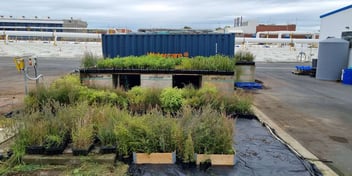Biosolids prove beneficial for utilities, new study shows
Resource recovery is firmly on the map for water utilities, with the past decade showcasing significant growth in beneficial biosolids reuse. Two leading utilities put this success down to a long-term commitment and nurturing strong and beneficial relationships with end users.
According to the recently released Biosolids Production and Use Survey Summary from the Australian and New Zealand Biosolids Partnership (ANZBP), about 90% of biosolids were beneficially used in 2019 Australia wide, up from about 65% in 2010.
The report collates the results of a national survey to identify the main features of biosolids management across Australia and New Zealand. The survey was commissioned by ANZBP in 2010 and repeated in 2013, 2015, 2017 and again in 2019.
By 2019, more than 320 sites were surveyed in Australia, representing a total equivalent person count of about 24.8 million.
One of the most impressive findings from the report is SA Water’s biosolids reuse performance. The utility achieved 100% beneficial reuse over the 2010-2019 data period, which Wastewater Lead Asset Planner Dr Nirmala Dinesh attributed to SA Water’s long-term dedication to biosolids reuse.
“We have proactively focused on the beneficial reuse of biosolids in agricultural farmland since the late 1990s,” Dinesh said.
“This required some great leadership, but also the vision of treatment and operational experts at the time.
“We wanted biosolids to help support our state’s farmers with its nutrient value, as our research proved it’s an effective organic alternative to chemical fertilisers.”
Dinesh said SA Water had been involved in biosolids reuse research, implementing monitoring and controlled application studies in the mid 1990s, and the results proved the application of biosolids was an excellent soil conditioner for broadacre farming.
“Since then, we have steadily and consistently developed a centralised reuse program from the Bolivar Wastewater Treatment Plant site, which collects and processes biosolids from all of our metropolitan Adelaide plants and distributes to farmers for broadacre application,” she said.
“We also have a decentralised reuse program managed at our regional sites, which distributes biosolids to farmers in the vicinity of our treatment plants across South Australia.
“We have hundreds of farmers who have been reusing biosolids for over 15 years. The value of our biosolids has been promoted locally with neighbouring farms by word of mouth along with excellent dedicated work by our people.”
Dinesh said the success of SA Water’s biosolids reuse program relied on working closely with farmers to ensure the process runs smoothly.
“We work with them to understand their seasonal needs to determine the right application rates and support the necessary approvals and paperwork required,” she said.
“We have dedicated personnel to undertake this ongoing liaison, which also includes working with the Environment Protection Authority, to ensure we meet the expectations of our customers and regulators.”
Sharing success
Melbourne Water has also experienced a significant increase in beneficial reuse during the study period, and Innovation and Partnership Senior Process Engineer Ellen Tao said the utility’s biosolids program continues to grow.
“Melbourne Water has recently successfully reused 1.3 million tonnes of clay-rich biosolids from the Eastern Treatment Plant to rehabilitate a collapsed landfill in outer Melbourne,” Tao said.
“Our biosolids land application program from the Western Treatment Plant has also been broadened to 50,000 dry tonnes in 2019-20.”
Tao said the utility had also been furthering research into reuse options.
“The potential reuse opportunities of biosolids in agriculture have long been known, but over the last several years Melbourne Water has also investigated other uses for biosolids including use in production of bricks, cement and energy,” she said.
“In evaluating biosolids reuse a range of factors are considered, including cost, environmental outcomes and benefits to the community.
“To achieve 100% reuse of biosolids, Melbourne Water will continue to develop alternative biosolids reuse options to in order maximise the recovery of energy and nutrient content within different grades of biosolids.”
In agreement with Dinesh, Tao said the success of land application programs relied heavily on ensuring end users were supported throughout the process.
“It’s important for water utilities to have trusted and dedicated people to take the time to answer farmers’ questions about the product, determine if it is suitable for their needs and provide advice for onsite application,” she said.
For more novel reuse options the challenge lies in testing, Tao said, but the burden of could be overcome if water utilities worked together.
“Most of the biosolids reuse options will need to go through trial stages to test their feasibility for implementation,” she said.
“For new biosolids products, the challenge is that it is difficult to test the market until sufficient quantities are produced from the new technology, such as pyrolysis.
“Water utilities should collaborate across the water industry to learn from each other’s experience and share insights and successes to avoid duplication of investigations and trials as much as possible."

